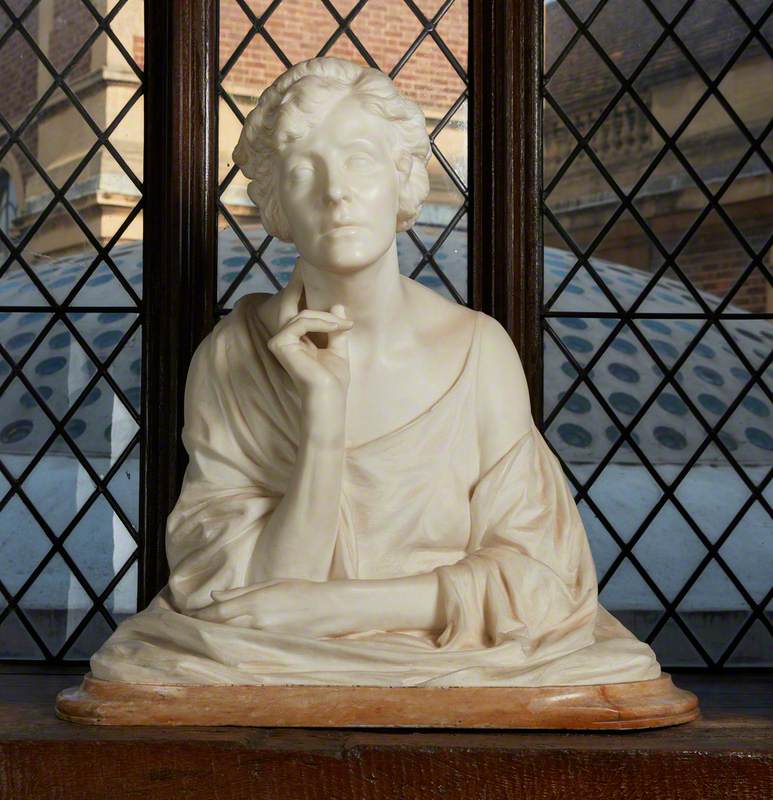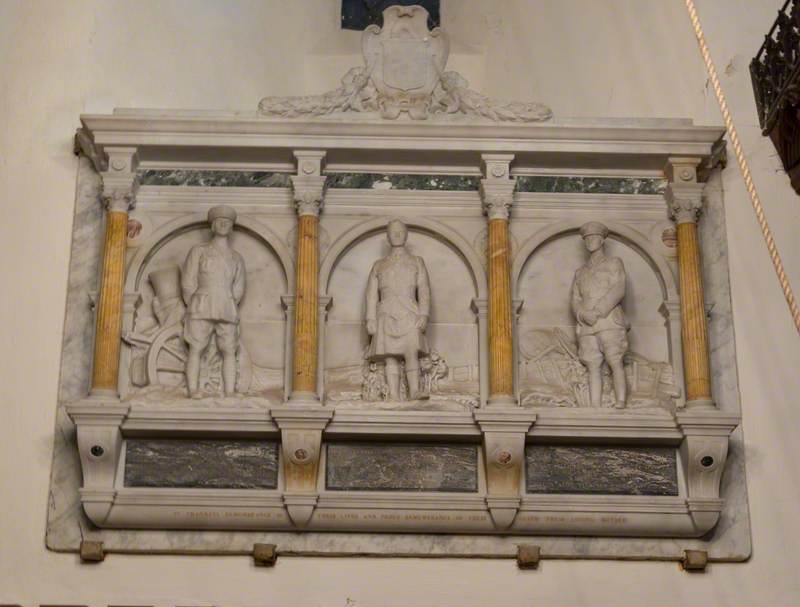Italian sculptor working in marble and bronze. He was one of six children of Giacomo, Count Lovatelli (1832–1879) and his wife Ersilia Caetani-Lovatelli (1840–1925), daughter of Michelangelo Caetani, 13th Duke of Sermoneta (1804–1882) and his Polish wife Countess Calixta Rzewuski. Both Filippo and his elder brother Giovanni (b.1859), an Italian naval officer, who was also naval attaché in London on two occasions (up to 1896 and then up to 1913), used the title ‘Count’. Probably in 1911 Filippo married in Argentina to Adelaida Keen Vargas (b.1879), who came from Azul, about 300 kilometres south of Buenos Aires. They appear to have had no children but on 29th December 1951 adopted her 39-year-old nephew, presumably mainly for legal inheritance purposes.
Lovatelli’s maternal grandfather was a member of Roman intellectual society who greatly influenced the upbringing of his mother, Ersilia, and of her children in the three years after their father’s early death. Ersilia was herself a scholarly art and cultural historian, and archaeologist, who up to the First World War also ran a prominent twice-weekly salon at the Palazzo Caetani-Lovatelli in Rome, where guests included Frans Liszt, Emile Zola, Gabriele D’Annunzio and other notable intellectuals, writers and diplomats (rather than politicians). Her younger brother, Onorato, became 14th Duke of Sermoneta from 1882.
How Lovatelli trained as a sculptor is unclear and his identified portrait work appears to have been undertaken through family and society connections. Passing references in memoirs mention sculpture as his ‘hobby’ when a young man and of him as a ‘gentleman artist’ whose studio in Rome was also an artistic rendezvous. Those noted as visitors include the futurist painter and poet Giacomo Balla (1871–1958) whom he knew well, the stage designers Leon Bakst (1866–1924) and Edward Gordon Craig (1872–1966), the dancer Isadora Duncan (1877–1927) and the jeweller Anna (Orisa) Bachelli (1898–1975).
By 1912, and up to 1914, Lovatelli was in Argentina. Two florid rather than factual articles about him in issues 17 and 18 of the Argentine cultural journal Atlantida (1912), by its director David Peña, mention his recent marriage and show he was practising sculpture there, apparently in clay intended for bronzes, and on subjects including members of his new wife’s family. Peña’s first piece (no. 17, pp.303–05) hints that he had won prizes in Europe and the good opinion of the French commentator Jean de Bonnefon (1867–1928) and lists a bronze of an Irish hunting horse owned by the King of Italy, another of a ballerina and a third of a female nude titled L'après midi de Jeanette: it also includes a portrait photo of him (p.304). The second article is illustrated with a seated figure of Carlos Keen (possibly his wife’s uncle), a bust that is probably his wife’s brother Jorge, the King of Italy’s horse, a small equestrian figure piece of the Uruguayan statesman José Gervasio Artigas (1764 –1850) and the Jeanette bronze – the others all apparently being clay models. Peña’s account says the original Artigas clay was stolen from Lovatelli’s workshop forcing him to repeat it: it therefore seems that the equestrian examples, at least, were relatively small. At the turn of 1913–1914 Lovatelli also won an Argentine military competition against two other contenders for the national monument to Lieutenant-General Luis María Campos (1838–1907): the full-length, uniformed, bronze standing figure was cast in Rome and installed in 1915 in the Buenos Aires street that, anticipating the event, was renamed after Campos in November 1914. Since Lovatelli presumably modelled the full-size version in Rome, that was probably when his Argentine residence ended.
The Sketch of 5th August 1920 included a full-page photograph of a half-figure marble bust of Countess Magda Gaetani – Lovatelli’s widowed sister-in-law – shortly after she remarried in Rome to Edward Allis Keeling (1885–1975), a British diplomat. The caption refers to him as ‘Count Filippo Lovatelli, the clever Roman sculptor’. In February 1922 he was badly wounded in a sword duel in Rome with Martino, Duke of Torlonia, when the latter's American wife refused to pay Lovatelli’s price for a half-length bust of herself, offering far less: figures reported in different currencies in the international press vary wildly. At the Royal Academy in 1924, from his Rome address at 5 Via Maria Christina he also showed his half-figure marble bust of Virginia Courtauld (no. 1405), still in the former Courtauld home at Eltham Palace, Greenwich (English Heritage).
Lovatelli is also credited with the mural monument in Holy Trinity Church, Cuckfield, West Sussex, to three of the five sons of the diplomat Sir John Gordon Kennedy KCMG (d.1912) who were killed in the First World War, all as army captains. A report of its unveiling (Mid-Sussex Times, 11th May 1937) says it was modelled ‘from a panel tombstone in the old church of Chelsea’ and it comprises a tripartite Renaissance-style classical arcade with each of the men as uniformed full-length figures in miniature. The Chelsea model(s) could be either the Hungerford or Lawrence family monuments – both twin-arched: an obvious and more sophisticated one might also be the three-doored Sansovino loggetta in Venice. Notice of the faculty for the installation of the Kennedy piece identified it as ‘by Lovatelli, Rome’ (Mid-Sussex Times,12th January 1937) and he probably carved the high-relief figure panels there with the rest done by specialist masons. Whether this is Italian work or English is unclear, but the commission was certainly based on personal connection. It came from the widowed and elderly Lady Kennedy (d.1939) who had moved from Cuckfield by the time it was installed and did not attend the unveiling though her two surviving sons did. Born Evelyn Adela Bootle-Wilbraham, her sister Ada Constance (1846–1934) was Lovatelli’s aunt, wife of his uncle Onorato. He is therefore likely to have known the Kennedy sons himself and, helped by photographs, well enough to carve their figures as good portraits.
Lovatelli probably divided his time between his Rome studio and the family’s Argiano estate in the Montalcino municipality near Siena, where he was noted as living in 1934. He died in 1952.
Summarised from Art UK's Art Detective discussion 'Can you tell us more about the sculptor Filippo Lovatelli?'
Text source: Art Detective


